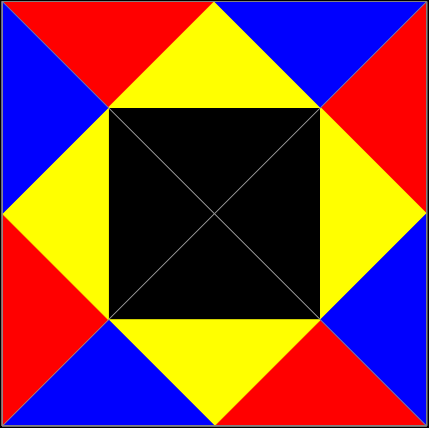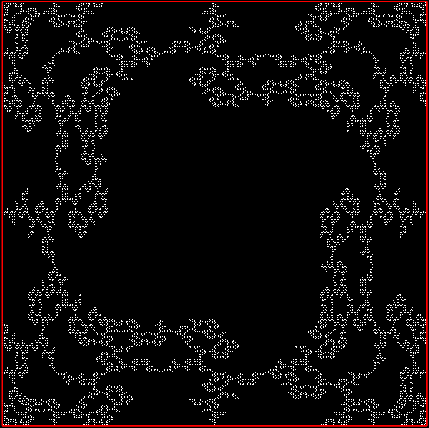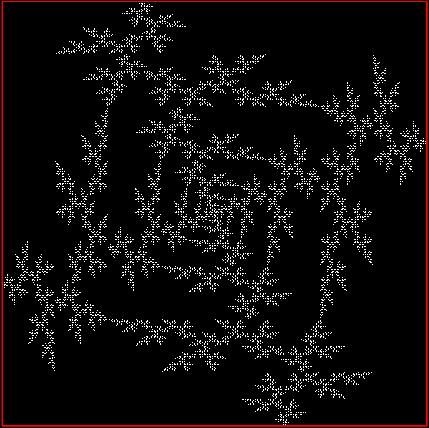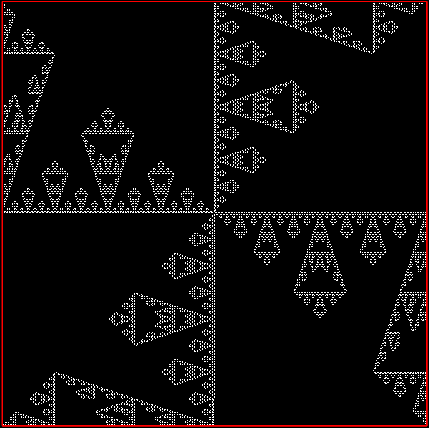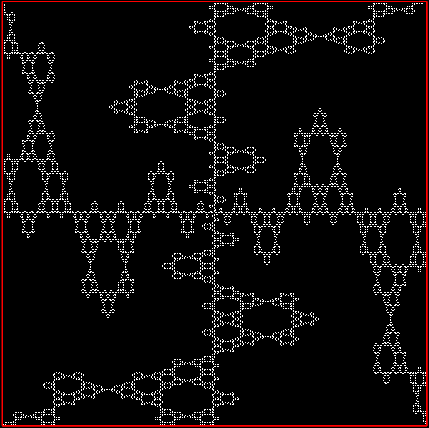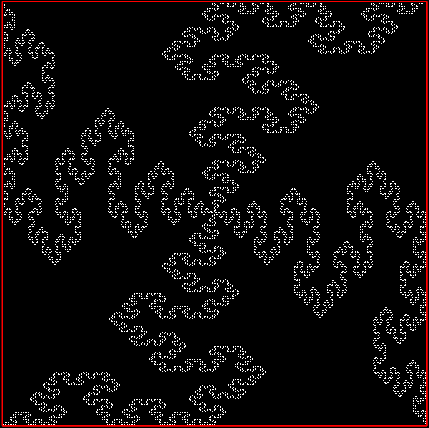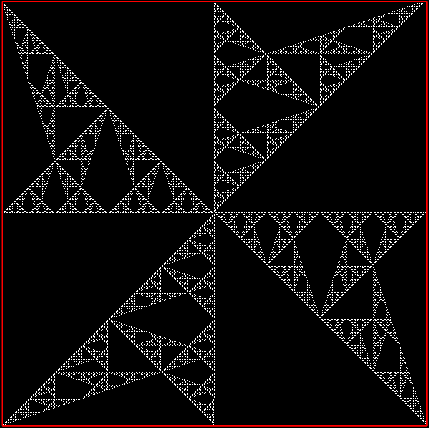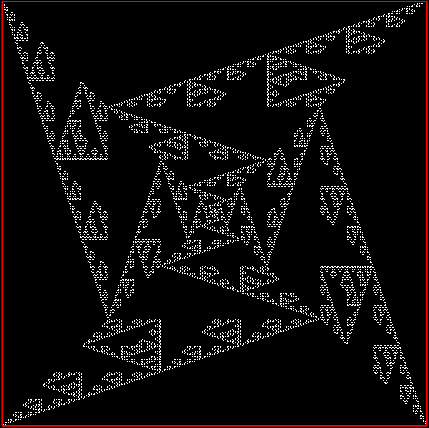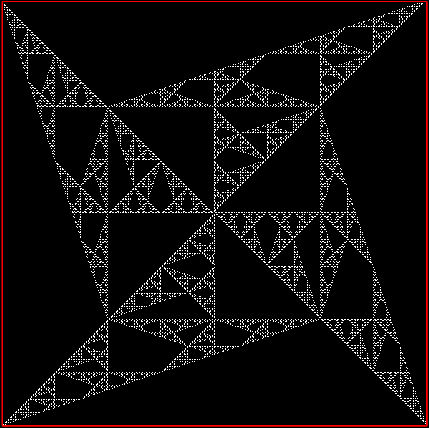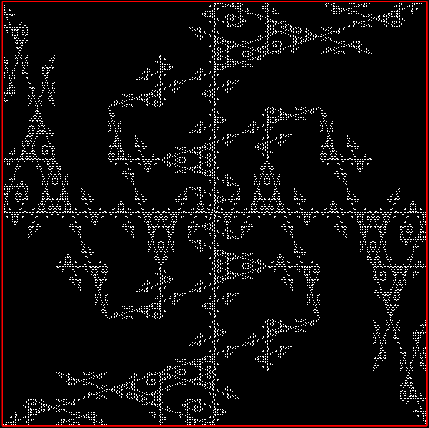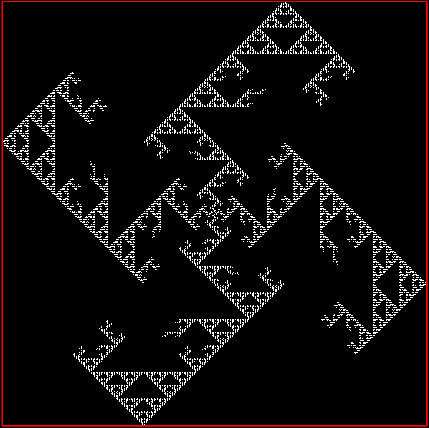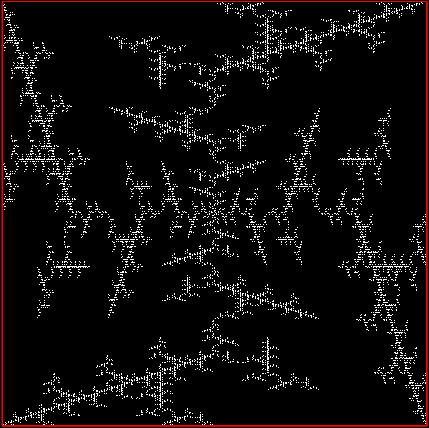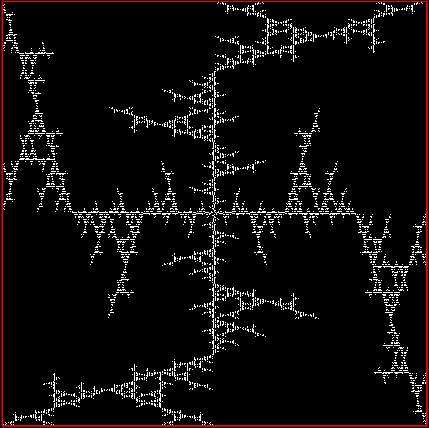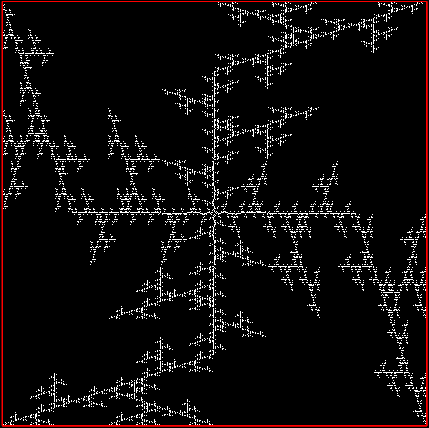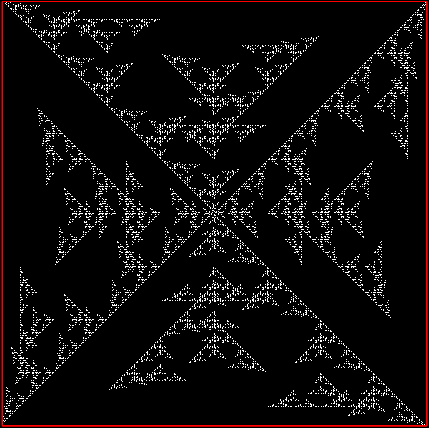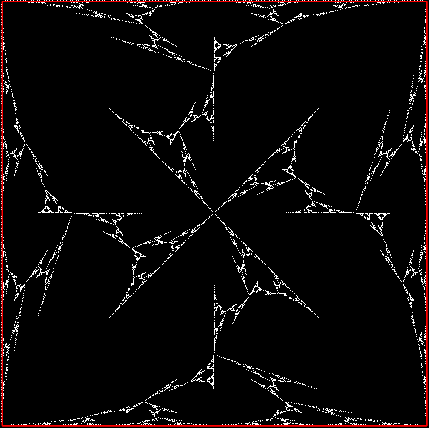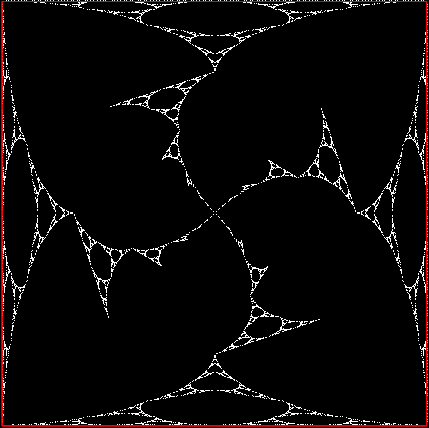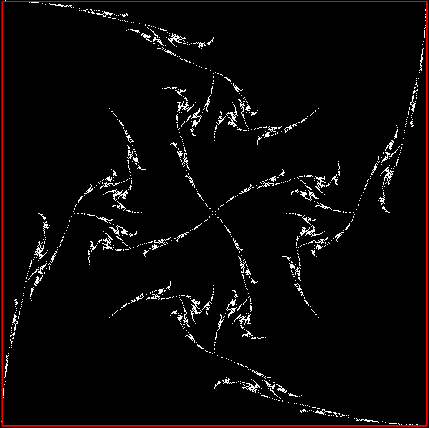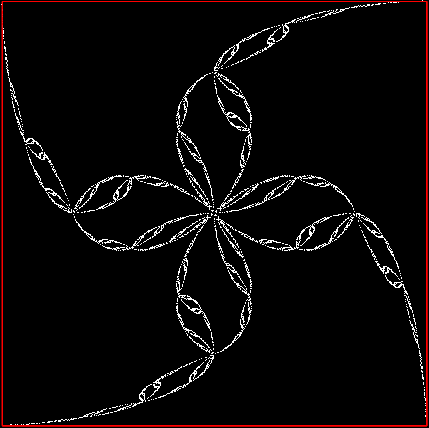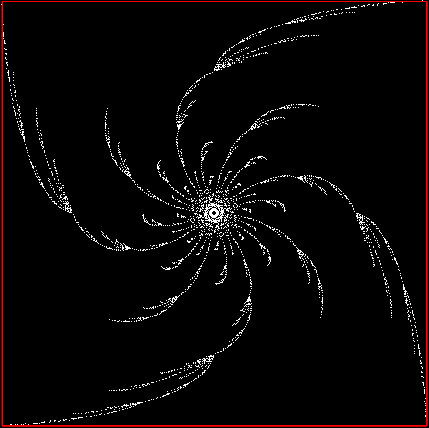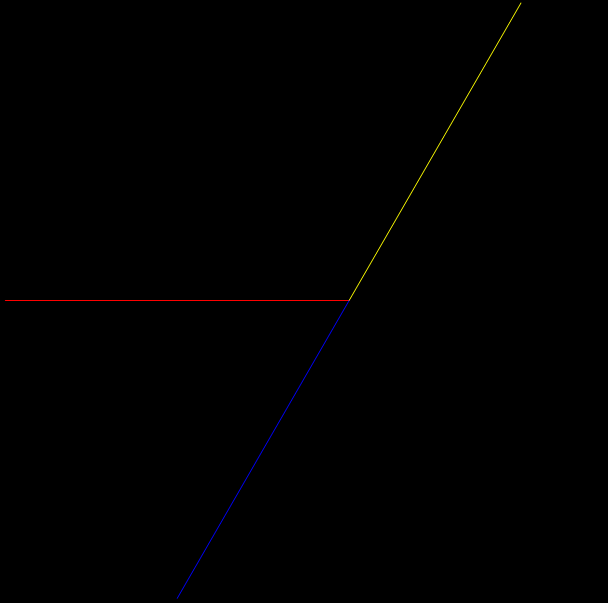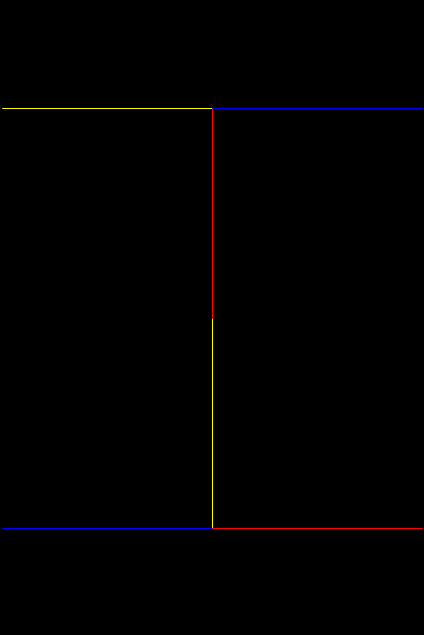As I never tire of pointing out, the three most powerful drugs in the universe are water, maths and language. And I never tire of snorting the fact that numbers can come in many different guises. You can take a trivial, everyday number like a hundred and see it transform like this:
100 = 1100100 in base 2; 10201 in base 3; 1210 in base 4; 400 in base 5; 244 in base 6; 202 in base 7; 144 in base 8; 121 in base 9; 100 in b10; 91 in b11; 84 in b12; 79 in b13; 72 in b14; 6A in b15; 64 in b16; 5F in b17; 5A in b18; 55 in b19; 50 in b20; 4G in b21; 4C in b22; 48 in b23; 44 in b24; 40 in b25; 3M in b26; 3J in b27; 3G in b28; 3D in b29; 3A in b30; 37 in b31; 34 in b32; 31 in b33; 2W in b34; 2U in b35; 2S in b36; 2Q in b37; 2O in b38; 2M in b39; 2K in b40; 2I in b41; 2G in b42; 2E in b43; 2C in b44; 2A in b45; 28 in b46; 26 in b47; 24 in b48; 22 in b49; 20 in b50; 1[49] in b51; 1[48] in b52; 1[47] in b53; 1[46] in b54; 1[45] in b55; 1[44] in b56; 1[43] in b57; 1[42] in b58; 1[41] in b59; 1[40] in b60; 1[39] in b61; 1[38] in b62; 1[37] in b63; 1[36] in b64; 1Z in b65; 1Y in b66; 1X in b67; 1W in b68; 1V in b69; 1U in b70; 1T in b71; 1S in b72; 1R in b73; 1Q in b74; 1P in b75; 1O in b76; 1N in b77; 1M in b78; 1L in b79; 1K in b80; 1J in b81; 1I in b82; 1H in b83; 1G in b84; 1F in b85; 1E in b86; 1D in b87; 1C in b88; 1B in b89; 1A in b90; 19 in b91; 18 in b92; 17 in b93; 16 in b94; 15 in b95; 14 in b96; 13 in b97; 12 in b98; 11 in b99
I like the shifts from 1100100 to 10201 to 1210 to 400 to 244 to 202 to 144 to 121. How can 1100100 and 244 be the same number? Well, they are — or they’re not, as you please. In base 2, 1100100 = 244 in base 6 = 100 in base 10. But if all those numbers are in the same base, they’re completely different and 1100100 dwarfs the other two.
But some things you can’t please yourself about. Suppose you take the different representations of 6561 in bases 2..6560 and add up the 1s, the 2s, the 3s and so on, like this:
n=6561
digsum(1,6561,b=2..6560) = 3343 (50.95% of 6561)
digsum(2,6561,b=2..6560) = 2246 (34.23% of 6561)
digsum(3,6561,b=2..6560) = 1680 (25.61% of 6561)
digsum(4,6561,b=2..6560) = 1368 (20.85% of 6561)
digsum(5,6561,b=2..6560) = 1185 (18.06% of 6561)
digsum(6,6561,b=2..6560) = 1074 (16.37% of 6561)
digsum(7,6561,b=2..6560) = 875 (13.34% of 6561)
digsum(8,6561,b=2..6560) = 768 (11.71% of 6561)
digsum(9,6561,b=2..6560) = 1080 (16.46% of 6561)
[...]
digcount(0,6561,b=2..6560) = 31
Is there a pattern in the percentages? Let’s apply the same process to some bigger numbers (and note that 0 does not behave like the other digits):
n=59049
digsum(1,59049) = 29648 (50.21%)
digsum(2,59049) = 19790 (33.51%)
digsum(3,59049) = 14901 (25.23%)
digsum(4,59049) = 11956 (20.25%)
digsum(5,59049) = 9970 (16.88%)
digsum(6,59049) = 8550 (14.48%)
digsum(7,59049) = 7539 (12.77%)
digsum(8,59049) = 6672 (11.30%)
digsum(9,59049) = 6579 (11.14%)
digcount(0,59049) = 41
n=531441
digsum(1,531441) = 266065 (50.06%)
digsum(2,531441) = 177394 (33.38%)
digsum(3,531441) = 133128 (25.05%)
digsum(4,531441) = 106532 (20.05%)
digsum(5,531441) = 88815 (16.71%)
digsum(6,531441) = 76224 (14.34%)
digsum(7,531441) = 66661 (12.54%)
digsum(8,531441) = 59320 (11.16%)
digsum(9,531441) = 53928 (10.15%)
digcount(0,531441) = 62
n=4782969
digsum(1,4782969) = 2392219 (50.02%)
digsum(2,4782969) = 1595000 (33.35%)
digsum(3,4782969) = 1196370 (25.01%)
digsum(4,4782969) = 957300 (20.01%)
digsum(5,4782969) = 797700 (16.68%)
digsum(6,4782969) = 683850 (14.30%)
digsum(7,4782969) = 598444 (12.51%)
digsum(8,4782969) = 531944 (11.12%)
digsum(9,4782969) = 480870 (10.05%)
digcount(0,4782969) = 66
Yes, the pattern’s getting stronger. Let’s try even bigger numbers:
n=43046721
digsum(1,43046721) = 21525521 (50.01%)
digsum(2,43046721) = 14350754 (33.34%)
digsum(3,43046721) = 10763496 (25.00%)
digsum(4,43046721) = 8610980 (20.00%)
digsum(5,43046721) = 7175955 (16.67%)
digsum(6,43046721) = 6150924 (14.29%)
digsum(7,43046721) = 5382167 (12.50%)
digsum(8,43046721) = 4784232 (11.11%)
digsum(9,43046721) = 4306257 (10.00%)
digcount(0,43046721) = 86
n=387420489
digsum(1,387420489) = 193716365 (50.00%)
digsum(2,387420489) = 129145522 (33.33%)
digsum(3,387420489) = 96859980 (25.00%)
digsum(4,387420489) = 77488588 (20.00%)
digsum(5,387420489) = 64574220 (16.67%)
digsum(6,387420489) = 55349742 (14.29%)
digsum(7,387420489) = 48431250 (12.50%)
digsum(8,387420489) = 43050264 (11.11%)
digsum(9,387420489) = 38748357 (10.00%)
digcount(0,387420489) = 95
To the given precision, the sum of 1s is 1/2 of n; the sum of 2s is 1/3; the sum of 3 is 1/4; and the sum of 4s is 1/5. It looks as though the sum of a given digit d → 1/(d+1) of n as n → ∞. But why? My mathematical intuition is bad, so it took me a while to see what some people will see in a flash. To see what’s going on, let’s go back to the all-base representations of 100:
100 = 1100100 in base 2; 10201 in base 3; 1210 in base 4; 400 in base 5; 244 in base 6; 202 in base 7; 144 in base 8; 121 in base 9; 100 in b10; 91 in b11; 84 in b12; 79 in b13; 72 in b14; 6A in b15; 64 in b16; 5F in b17; 5A in b18; 55 in b19; 50 in b20; 4G in b21; 4C in b22; 48 in b23; 44 in b24; 40 in b25; 3M in b26; 3J in b27; 3G in b28; 3D in b29; 3A in b30; 37 in b31; 34 in b32; 31 in b33; 2W in b34; 2U in b35; 2S in b36; 2Q in b37; 2O in b38; 2M in b39; 2K in b40; 2I in b41;
2G in b42; 2E in b43; 2C in b44; 2A in b45; 28 in b46; 26 in b47; 24 in b48; 22 in b49; 20 in b50; 1[49] in b51; 1[48] in b52; 1[47] in b53; 1[46] in b54; 1[45] in b55; 1[44] in b56; 1[43] in b57; 1[42] in b58; 1[41] in b59; 1[40] in b60; 1[39] in b61; 1[38] in b62; 1[37] in b63; 1[36] in b64; 1Z in b65; 1Y in b66; 1X in b67; 1W in b68; 1V in b69; 1U in b70; 1T in b71; 1S in b72; 1R in b73; 1Q in b74; 1P in b75; 1O in b76; 1N in b77; 1M in b78; 1L in b79; 1K in b80; 1J in b81
; 1I in b82; 1H in b83; 1G in b84; 1F in b85; 1E in b86; 1D in b87; 1C in b88; 1B in b89; 1A in b90; 19 in b91; 18 in b92; 17 in b93; 16 in b94; 15 in b95; 14 in b96; 13 in b97; 12 in b98; 11 in b99
When the base b is higher than half of 100, the representations of 100 consist of a digit 1 followed by another digit. Half of a hundred = 50, therefore 100 in base 10 = 1[49] in b51, 1[48] in b52, 1[47] in b53, 1[46] in b54, 1[45] in b55, 1[44] in b56, 1[43] in b57, 1[42] in b58, 1[41] in b59… If you take binary and so on into account, 1 is the first digit of slightly over half the representations of 100. And 1 also occurs in other positions. Therefore digsum(1,100,b=2..99) > 50. As the number n gets larger and larger, the contribution of leading 1s in bases b > n/2 begins to swamp the contributions of 1s in other positions, therefore digsum(1,n) → 1/2 of n as n → ∞.
And what about 2s and 3s? Similar reasoning applies. One hundred has a leading digit of 2 in bases b where b > 1/3 of 100 and b <= 1/2 of 100. So 100 = 2W in b34, 2U in b35, 2S in b36, 2Q in b37, 2O in b38… In other words, roughly 1/2 – 1/3 of the representations of 100 have a leading 2. Now, 1/2 – 1/3 = 3/6 – 2/6 = 1/6 and 1/6 * 2 = 1/3 (i.e., 1/6 of the representations contribute a leading 2 to the sum of 2s). Therefore the all-base digsum(2,n) → 1/3 of n as n → ∞. Next, one hundred has a leading digit of 3 in bases b where b > 1/4 of 100 and b <= 1/3. So 100 = 3M in b26, 3J in b27, 3G in b28, 3D in b29, 3A in b30… Now, 1/3 – 1/4 = 4/12 – 3/12 = 1/12 and 1/12 * 3 = 1/4. Therefore the all-base digsum(3,n) → 1/4 of n as n → ∞.
And so on.












